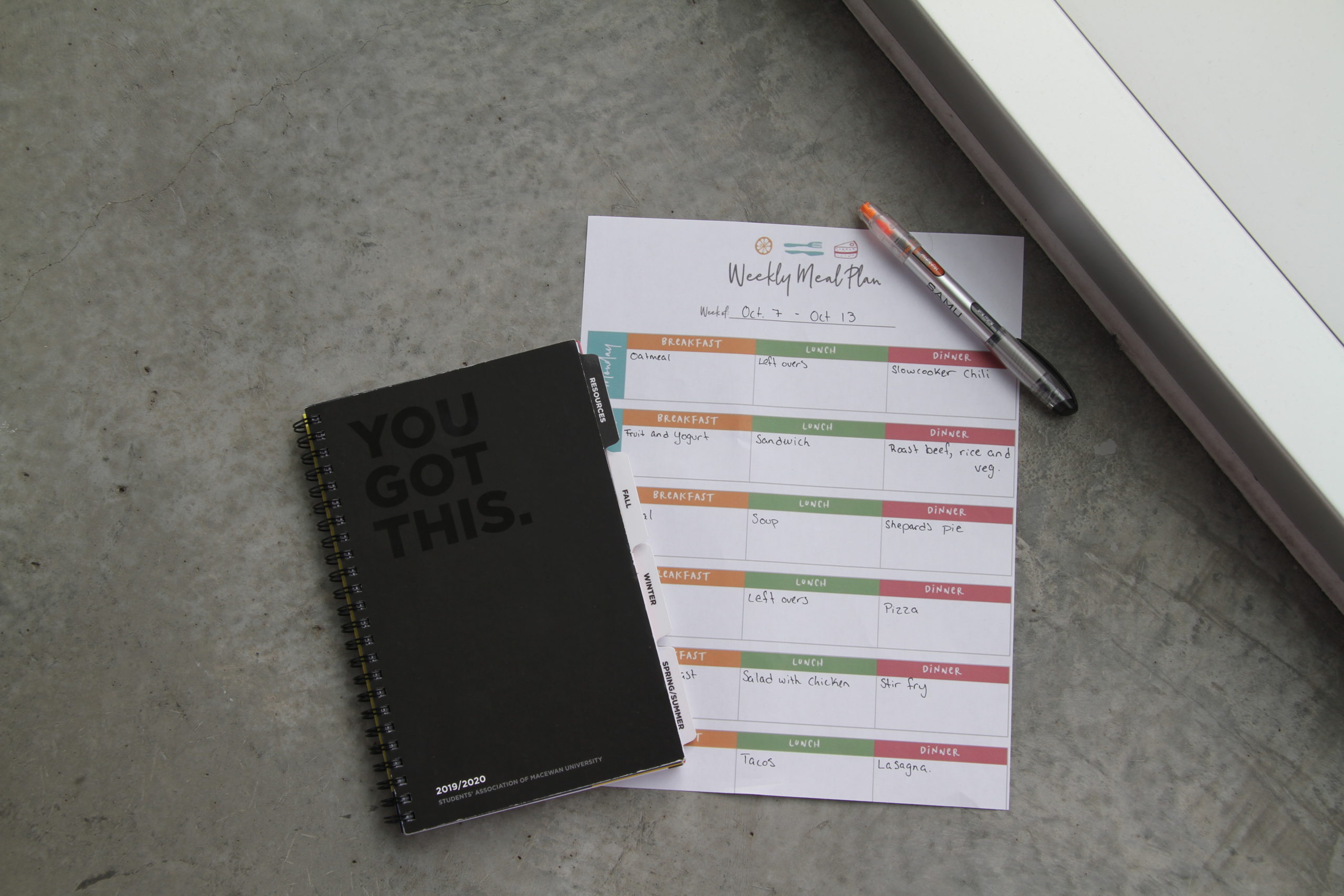Next to breathing, eating is the most important and basic human need. Due to this fact, when we run low on time, but still require sustenance, we turn to whatever is readily available, which more often than not means terrible meals, bought on the run at far too high a cost. This unhealthy habit is incredibly counterintuitive to our budget-conscious student life.
The solution is simple: meal planning! Sitting down and choosing your meals ahead of time saves you from shopping hungry and buying everything in sight, something most of us are guilty of. However, it does more than just that, it allows you the opportunity to choose meals that suit your eating habits and your busy schedule.
So, let’s get to it. How does one go about planning meals? It’s easy, actually.
STEP ONE: PICK YOUR DAYS.
Pick a day of the week that works best for grocery shopping and then set aside some time a couple of days before that to make your meal and grocery list. For example, if you grocery shop on Saturdays, sit down on Thursday evening, choose your meals for the upcoming week, then make your grocery list.
STEP TWO: GRAB YOUR SCHEDULE.
If you’re making a meal plan, this is the most important step. Your schedule will allow you to decide what to pick on which days based on the time that you have available. A great way to look at it is that if you have a day that is very busy, picking a meal that is time consuming such as pulled pork would be a bad idea. Most likely, you would end up running out of time and just ordering in, which is precisely what meal planning is supposed to help you avoid. This is why your schedule is so important in choosing what meals go on what days. I can’t stress this enough: plan for easy meals such as sandwiches or salads on crazy days and things like roasts and mashed potatoes on days where you have an abundance of time.
STEP THREE: START PLANNING ALREADY.
Now that you know when you’ll be grocery shopping and you have your schedule, you can start picking the right meals for each day. As stated in step two, on days where you have more free time you may want to insert more complicated meals or even make time for prepping lunches. On days that are busier, you may want to make slow cooker meals or have a leftover night. Whatever you decide, you have to make choices that make sense for your lifestyle. Also, if you have a day that you know you need lunches, maybe, you make extra food and freeze it to take with you for lunch at a later time. This alone can save you time in the morning and money since you aren’t eating lunch out.
STEP FOUR: MAKE YOUR LIST AND CHECK IT TWICE.
It’s time. You can now make a grocery list with all the items you’ll need for the week with great ease because you won’t be second-guessing yourself. Also while you’re planning, you can choose recipes that have similar ingredients to reduce costs. If, for example, you’re making stir-fry that requires a lot of vegetables you can choose to make another recipe with similar vegetables, which cuts down on how many different items you need to purchase. You also won’t have to worry about buying all sorts of impulse items you don’t actually need because everything is planned out and you have a very specific list. Another great reason to meal plan is there’s less waste; when you buy only what you need, and you know exactly what that is, you’re less likely to throw away food you never had the opportunity to use. That is a saving in itself.
STEP FIVE: PLAN. WRITE. REPEAT!
Though this may seem time-consuming, it isn’t in the long run. Remember that the time you spend planning saves a great deal of time day to day and although it might feel like added work, it gets easier and easier each time until it is no different than writing a quick to-do list.
There are some resources that can help with your meal plan such as the templates available on templatelab.com. If keeping things separate is too much, make it your own by choosing your favourite calendar and saving some space on each square to jot down your meals. In the end, how you use meal planning in your life is completely up to you, but remember the adage: fail to plan, plan to fail!





0 Comments